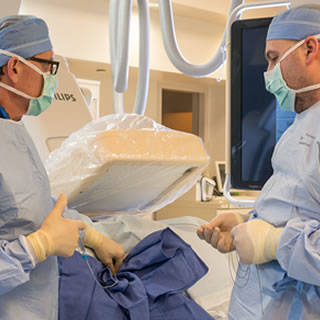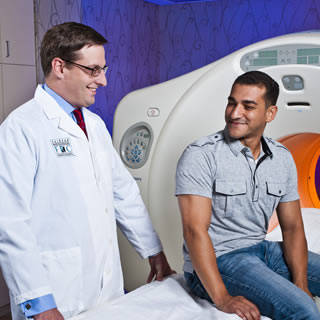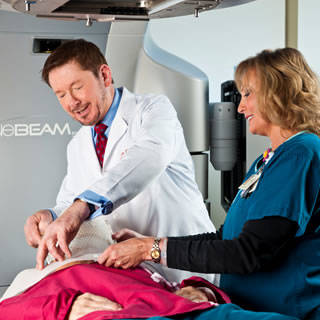دستگاه رادیولوژی
دستگاه رادیولوژی به عنوان یکی از دستگاه های تصویر برداری که اساس عملکرد آن مبتنی بر اشعه ایکس است,از اجزاء مختلفی تشکیل می شود.
قسمت های اصلی یک دستگاه رادیولوژی
-
تیوب مولد اشعه ایکس
-
ستون نگهدارنده تیوب
-
کولیماتور(Collimator)
-
ژنراتور ولتاژ بالا
-
کابل های ولتاژ بالا
-
فیلم رادیوگرافی
-
تخت رادیولوژی
-
تخت R/F
-
مدارات کنترلی دستگاه
-
میز فرمان اپراتور
-دستگاه رادیولوژی پرتابل
-رادیوگرافی پانورکس
-دستگاه پروسسور رادیولوژی
-فلوروسکوپی
-آنژیوگرافی
-ماموگرافی
-سی تی اسکن

دستگاه رادیولوزی
What does a radiologist do?
Your Radiologist
Your radiologist is a medical doctor who specializes in diagnosing and treating disease and injury, using medical imaging techniques such as x-rays, computed tomography (CT), magnetic resonance imaging (MRI), nuclear medicine, positron emission tomography (PET), fusion imaging, and ultrasound.
Because some of these imaging techniques involve the use of radiation, and require training to understand radiation safety and protection.
Your radiologist has graduated from an accredited medical school, passed a licensing examination, and completed a residency of at least four years of unique postgraduate medical education in, among other topics:
-
Radiation safety/protection
-
Radiation effects on the human body
-
Appropriate performance and interpretation of quality radiologic and medical imaging examinations
The majority of radiologists also complete a fellowship — one to two additional years of specialized training in a particular subspecialty of radiology, such as breast imaging, cardiovascular radiology or nuclear medicine.
Your Radiologist Plays a Key Role in Your Healthcare By:
-
Acting as an expert consultant to your referring physician (the doctor who sent you to the radiology department or clinic for testing) by aiding him or her in choosing the proper examination, interpreting the resulting medical images, and using test results to direct your care.
-
Treating diseases by means of radiation (radiation oncology) or minimally invasive, image-guided therapeutic intervention (interventional radiology).
-
Correlating medical image findings with other examinations and tests.
-
Recommending further appropriate examinations or treatments when necessary and conferring with referring physicians.
-
Directing radiologic technologists (personnel who operate the equipment) in the proper performance of quality exams.
Your Radiologist Has the Right Training, Knowledge, and Experience
When your referring doctors tell you they have reviewed your studies, what they usually mean is that they have reviewed the radiology report or gone over the imaging exam with your radiologist.
Radiologists are at the forefront of imaging technology, pioneering the use of CT, MRI, PET, and fusion imaging as well as minimally invasive procedures such as endovascular treatment of aneurysms and tumors, percutaneous biopsies, and pinpoint radiation therapy.
Radiologists, board certified by the American Board of Radiology (for a medical doctor) or the American Osteopathic Board of Radiology (for an osteopathic doctor), indicate the highest level of training and demonstrate excellence in the field.
What You Should Know About Quality and Safety in Medical Imaging
Radiologic procedures such as CT, MRI, and PET are medically prescribed and should only be performed by appropriately trained and certified physicians under medically necessary circumstances.
Radiologists are medical doctors who have received at least four years of unique, specific, post-medical school training in radiation safety, the optimal performance of radiological procedures, and interpretation of medical images.
Other medical specialties mandate far less imaging education, ranging from a few days to a maximum of 10 months. Use of medical imaging procedures by unqualified providers may needlessly expose you to radiation or radiation levels that could be unduly hazardous. It may also result in misdiagnosis or problems that are not diagnosed at all.
ACR Accreditation
Insist that any facility providing your medical imaging care be accredited by the American College of Radiology (ACR). ACR accreditation ensures that the physicians supervising and interpreting your medical imaging meet stringent education and training standards.
ACR accreditation also signifies that the imaging equipment is surveyed regularly by qualified medical physicists to ensure that it is functioning properly, and that the technologists administering the tests are certified. To locate a medical imaging or radiation oncology provider in your community, you can search the ACR-accredited facilities database.
What Is a Radiologist?
Radiologists are medical doctors that specialize in diagnosing and treating injuries and diseases using medical imaging (radiology) procedures (exams/tests) such as X-rays, computed tomography (CT), magnetic resonance imaging (MRI), nuclear medicine, positron emission tomography (PET) and ultrasound.
Radiologists complete at least 13 years of training, including medical school, a four-year residency, and most often, an additional one- or two-year fellowship of very specialized training, such as radiation oncology, pediatric radiology, or interventional radiology.
They are certified by the American Board of Radiology, and they have exacting requirements for continuing medical education throughout their practicing years.
Visit radiologyinfo.org for more comprehensive information on specific exams, disease conditions and treatments presented in easy-to-understand videos, images and articles.
Diagnostic Radiologists
Diagnostic radiologists use a variety of imaging procedures to see inside the body and assess or diagnose the patient’s condition.
Your radiologist plays an important role in your health by acting as an expert consultant to your referring physician (the doctor who sent you for testing) by choosing the proper exam and directing radiology technologists (those who operate the equipment) in properly performing quality exams. They interpret and report on the resulting images, recommending treatment and, only when appropriate, additional tests.
Diagnostic radiologists, through extensive clinical work and related research, may also specialize in these radiology subspecialties:
-
Breast imaging (mammograms)
-
Cardiovascular radiology (heart and circulatory system)
-
Chest radiology (heart and lungs)
-
Emergency radiology
-
Gastrointestinal radiology (stomach, intestines and abdomen)
-
Genitourinary radiology (reproductive and urinary systems)
-
Head and neck radiology
-
Musculoskeletal radiology (muscles and skeleton)
-
Neuroradiology (brain and nervous system; head, neck and spine)
-
Pediatric radiology (imaging of children)
Interventional Radiologists



